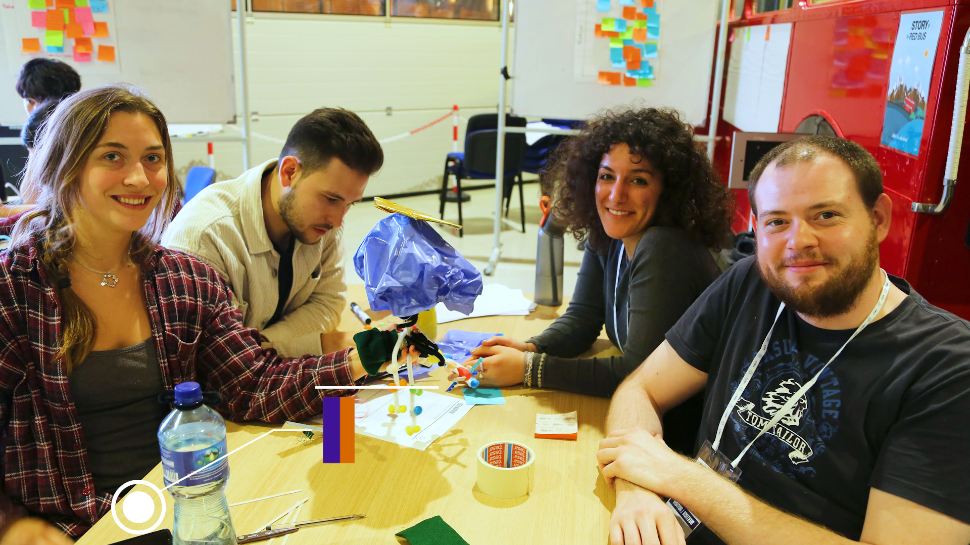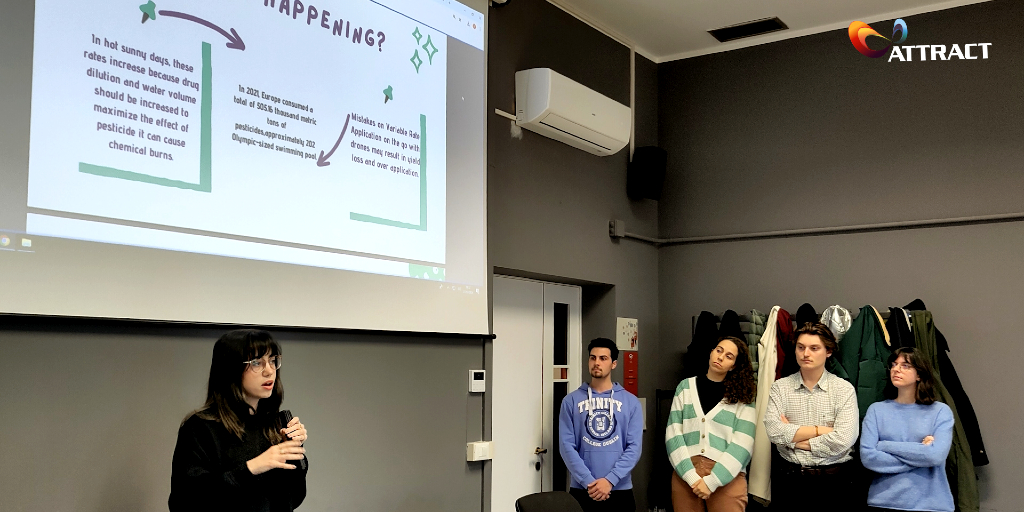The ATTRACT Pre-Final Conference, held at the European Synchrotron Radiation Facility (ESRF) in Grenoble, France, was a crucial event for ATTRACT phase 2. It brought together a large community of researchers and innovators to explore technological advancements with the potential to address critical societal challenges and push the boundaries of scientific discovery. Specifically, it provided an excellent opportunity for the 18 R&D&I-funded projects to showcase their progress and potential impact.
Each of these projects addresses unique challenges and seeks to advance scientific understanding and practical applications. From improving medical diagnostics and environmental monitoring to enhancing imaging systems and memory technologies, these projects reflect the diverse applications and significant potential impacts of ATTRACT’s support for research.
Get to know all the R&D&I projects:
- AHEAD: it aims at providing technology bricks enabling in situ sensing, heating and energy harvesting from fluids to achieve standalone measurements and data transmission. This project seeks to validate these developments to Technology Readiness Level 7 through two specific use cases: Mechanically Pumped Loops (MPL) for space applications and CO2-based industrial refrigeration systems.
Main applications: refrigeration system, Mechanically Pumped Loops for space applications, energy storage, thermal sealing device.
Watch the project video here. - Glass2mass: glass is one of the most important materials of the 21st century, and despite millennia of use, its processing techniques have remained largely unchanged for decades. This project is about making small parts from fused silica glass, the purest glass available via the Glassomer Technology using UV Nanoimprint Lithography (UV-NIL), and the research team have invented a worldwide unique process to shape this fused silica glass at near room temperature.
Main applications: commercial Glassomer resin for printing with UV-NIL, optical parts from Nanoimprint Lithography workflow.
Watch the project video here. - H3D-VISIOnAIR: this project is a breakthrough based on infrared imaging and the recognition of tissues in the human body. It consists of two multi-spectral cameras, combining visual range with NIR (Near Infrared) visualization, a belt computer with real-time data processing, and a high-end stereoscopic head-mounted display with wireless connection to the operating room infrastructure. The idea is to make tissues visible in real-time and on 3D images as an Augmented Reality (AR) overlay for the surgeon.
Main applications: surgical interventions.
Watch the project video here. - h-cube: it aims to develop a ready-for-the-market, room-temperature hyperspectral camera for far infrared electromagnetic radiation. It emerged as a response to the growing demand for affordable and portable hyperspectral imaging solutions in the terahertz (THz) region of the electromagnetic spectrum. This technology will operate at video rate with a disruptive use in security, health diagnostic and quality control applications.
Main applications: manufacturing inspection & QC – food, pharma and industrial Goods. Logistics, borders & event security -substances & threats; people & parcels.
Watch the project video here. - HipMed: cancer therapy faces significant obstacles in implementing personalized medicine due to the intricate nature of the disease and the multitude of available treatments. This project is developing a system that will enable pathologists to diagnose cancer better and faster and will provide them with better characterization of the tumour, improve the diagnosis quality, save time and provide decision support metrics for treatment decisions.
Main applications: fast diagnosis of cancer (lung cancer, lymphoma, prostate cancer, kidney cancer, melanoma).
Watch the project video here. - HYGER: it builds upon the material-level discoveries of ATTRACT phase 1, where researchers developed efficient infrared-absorbing nanostructures for germanium and novel pn-junctions using induced charge in thin films instead of conventional doping techniques. Now, the project aims to integrate these advancements into high-purity germanium detectors, demonstrating their superiority over state-of-the-art detectors.
Main applications: scientific instruments, medical diagnostics, night vision.
Watch the project video here. - HYLIGHT: it represents a paradigm shift in IVF (in vitro fertilization) treatments, offering a non-invasive yet highly effective method for selecting the most viable embryos. Combining hyperspectral analysis with artificial intelligence, the diagnostic device allows embryo classification based on their metabolic profiles, and by doing that, this device not only streamlines the embryo selection process but also minimizes potential harm, ushering in a new era of IVF.
Main applications: metabolic imaging of embryos.
Watch the project video here. - IALL: it is about lenses that can be adapted to the need and is a logical progression of the original Adaptive Liquid crystal Lens (ALL) project from ATTRACT phase 1. It aims to create a system where lenses are integrated with a camera and a microcontroller. This system will manage both the lens configuration and image capture, paving the way for its application in machine vision units in microscopes or surveillance systems.
Main applications: VR/AR/XR applications (eyesight compensation, adaptive focal depth), in markets where alternatives don’t exist (adaptive ophthalmologic eyewear, portal cameras, surveillance, frontline optics), microscopy/Medicare, space/aerospace, car lighting.
Watch the project video here. - MEGAMORPH: it aims to develop evaluation kits that will integrate graphene Micro Electromechanical Systems (MEMS) to showcase them and get radical commercialization of this technology that will bring the price reduction of CVD (chemically-vapour-deposited) graphene. It is a follow-up of the GIMOD project from ATTRACT phase 1, in which the consortium fabricated the first graphene interferometric modulator display prototypes.
Main applications: GMOD application for holographic hardware (microdisplay), main/niche/entry barrier application: hi-res SLM for standard/holographic images, HUD and AR/VR displays, displays for outdoor (yachts, smartwatch), gas composition measurement with a modified GMOD membrane.
Watch the project video here. - MetaHiLight: this project has a revolutionary approach to cancer diagnostics that harnesses the invisible properties of light to extract information from tissue samples that we don’t see with human eyes and combine it with artificial intelligence. By integrating nano-patterned surfaces into microchips, the project aims to reshape optical technologies, facilitating the creation of compact, portable devices for rapid and accurate cancer diagnosis.
Main applications: MEMS-micromirrors combined with metasurfaces, diagnostic tool (MEMS-micromirrors combined with metasurfaces).
Watch the project video here. - MicroQuaD: it aims to address limitations in single photon detection by advancing superconducting nanowire single photon detector (SNSPD) technology for broader deployment. By integrating SNSPDs with confocal microscope systems, the project seeks to enable new research opportunities in the field of material science. Furthermore, it will introduce the first commercial SNSPD-based microscopy system, providing ultra-fast and precise time-resolved measurements of fluorescence emission.
Main applications: microscopy and material science characterization, ultra-broadband applications, multichannel time tagging and multichannel detection. - PiPe4.0: it aims to tackle two primary challenges associated with in-situ monitoring in the distribution gas network by developing a system comprising two interconnected units: the Gas Monitoring Unit, which is able to perform a complete measurement of the gas parameters in injection and gas distribution cabins, and the Distributed Sensing Unit, which measures secondary parameters such as calorific value or pressure at different points, providing valuable feedback on the distribution network’s status.
Main applications: measurement of gas parameters in the distributing network. The proposed technology is an alternative to gas chromatography, being directly applicable to a wide set of mixtures, including hydrogen (central component toward green transition).
Watch the project video here. - POSICS-2: radio-Guided Surgery (RGS) is a well-established method for minimally invasive surgeries guided by imaging. Its success depends on advanced imaging tools and techniques used during surgery rather than specific radiopharmaceuticals tailored for particular diseases. This project aims to create a dual-use, cheap, handleable, wireless, compact, and lightweight camera for tumour treatment. It seeks to be more capable of finding the right target and minimizing the impact of the surgery on people.
Main applications: this project specializes in radio-guided surgery for lymph node detection and breast cancer treatment.
Watch the project video here. - Random Power: unpredictability is usually perceived with a sense of uneasiness. However, when it comes to safeguarding personal data, posts, pictures, and any information flowing to or from the internet about us, unpredictability is crucial for protection. Random Power uses quantum mechanics to generate an unpredictable and inviolable stream of random bits, forming strings of virtually infinite length at the base of any cryptographic process. This ensures the privacy and security of digital life.
Main applications: security, notably in I-IoT & defence, obfuscation (Differential Privacy, ORAM).
Watch the project video here. - SNIFFIRDRONE: the gas emissions from wastewater treatment plants occasionally result in unpleasant odours, often associated with toxic gases that may pose health risks to plant operators. Additionally, these occasional emissions have a detrimental impact on the well-being of neighbouring populations. To address these issues, this project utilizes drones equipped with chemical sensors to monitor this type of pollution and create detailed maps of the plants.
Main applications: 3D maps of odour and pollution (H2S, NH3, CO2, CH4), real-time detection of odour episodes.
Watch the project video here. - ULTRARAM: it is a non-volatile computer memory that combines the advantages of the two main types of memory: DRAM, which is the working memory of a computer, and Flash, a storage memory that is in the USB thumb drive. It uses a patented triple-barrier resonant tunnelling structure to deliver an unmatched combination of speed, non-volatility, endurance, and energy efficiency. It is a highly disruptive technology that can store data for more than 1,000 years.
Main applications: the main markets are space, cryo-computing, defence, IoT and data centres.
Watch the project video here. - UNICORN Dx: it represents a significant step in healthcare innovation, especially within diagnostics, by integrating various biosensing platforms. It originated from a collaboration among multiple institutions involved in ATTRACT phase 1, and it aims to transition from a ‘sick’ care system, primarily focused on restoring damage, to one that prioritizes the maintenance of health in society.
Main applications: it will help to identify the cause of diseases but also facilitate the selection of appropriate therapies, marking a shift towards preventive healthcare.
Watch the project video here. - VISIR2: it aims to develop a novel dual-band solid-state imager prototype. The technology covers both the visible (VIS) and short-wave infrared (SWIR) spectral ranges with a single sensor, allowing for easy discrimination between the two bands. The project seeks to overcome the limitations of current VIS- SWIR imagers, which are expensive and not compatible with silicon-based read-out circuitry. It aims to produce affordable, high-performance imagers with dual-band functionality, targeting applications in automotive, industrial automation, and environmental conservation.
Main applications: front-looking camera, driver monitoring, non-spectral plastic and textiles discrimination.
Watch the project video here.
Here are some pictures of the presentations:

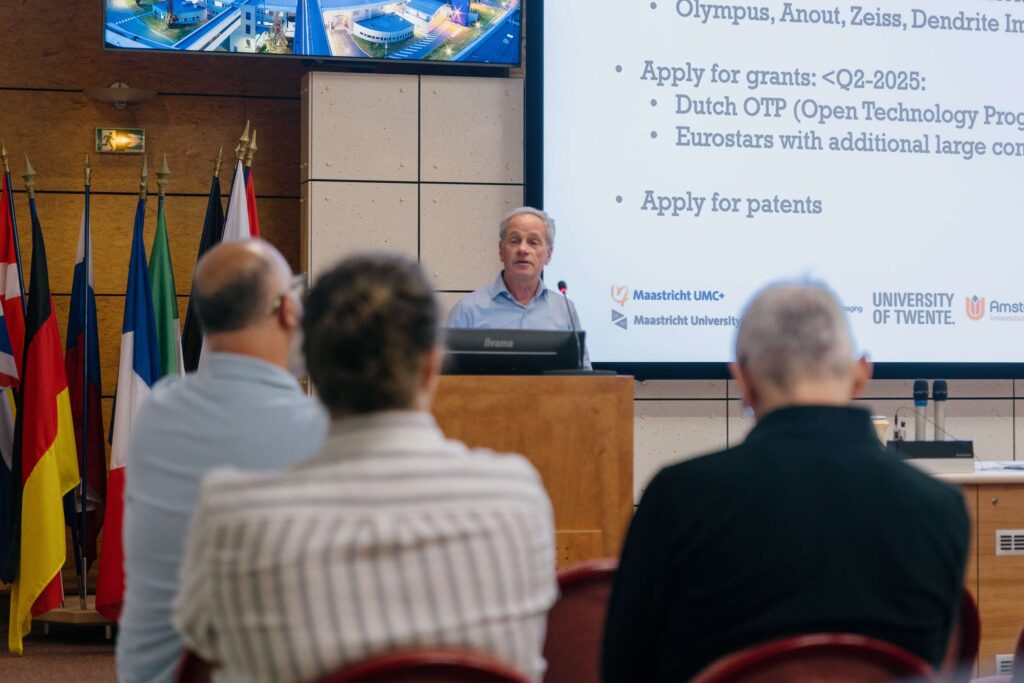
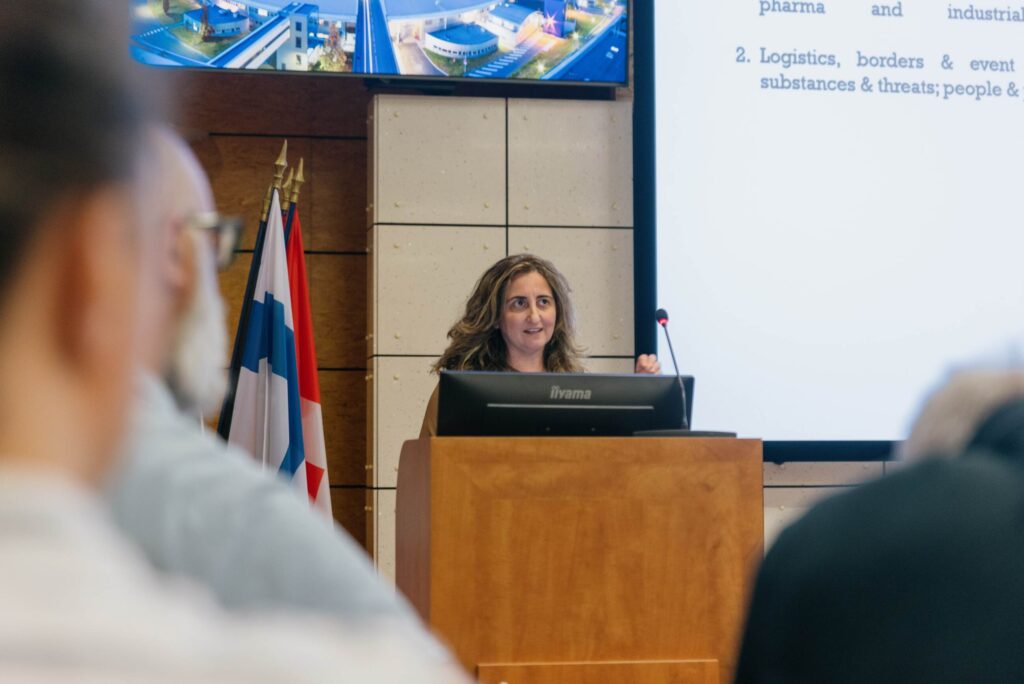

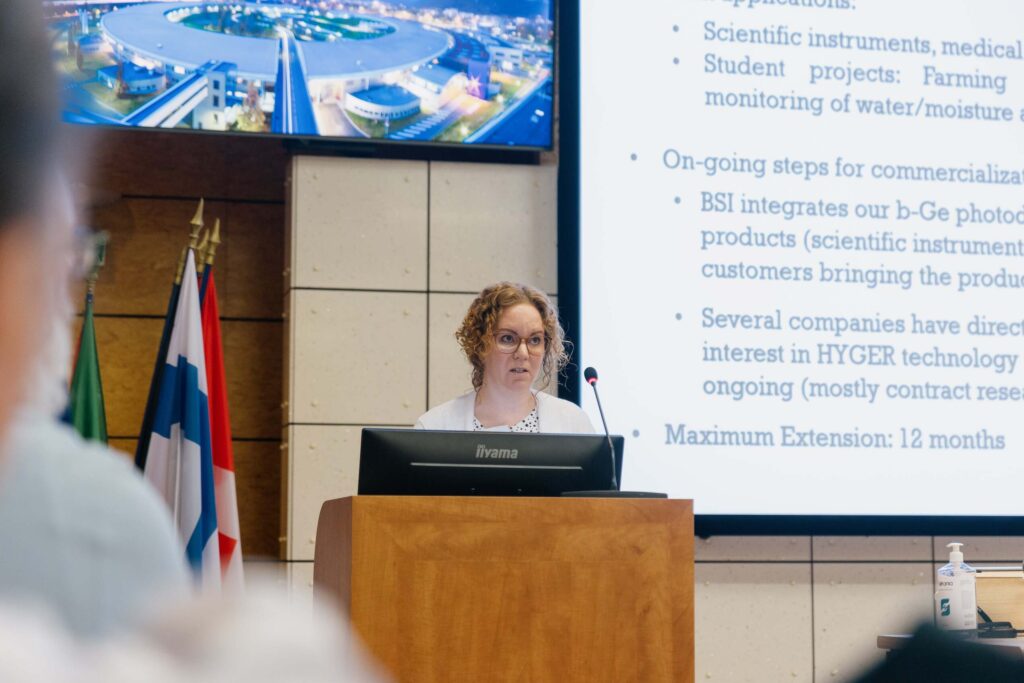
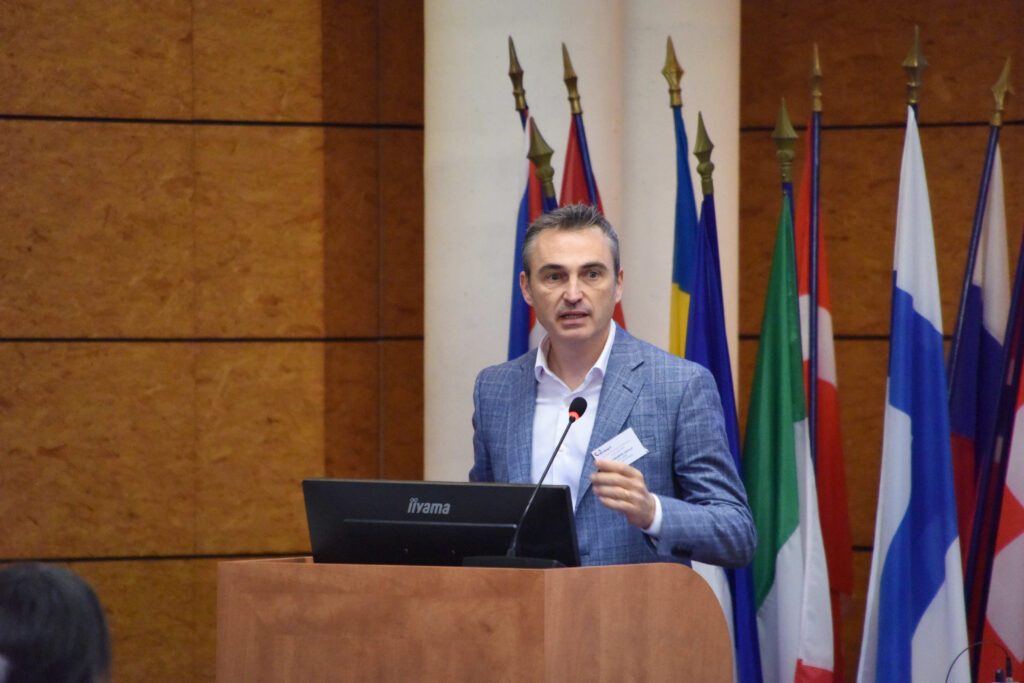
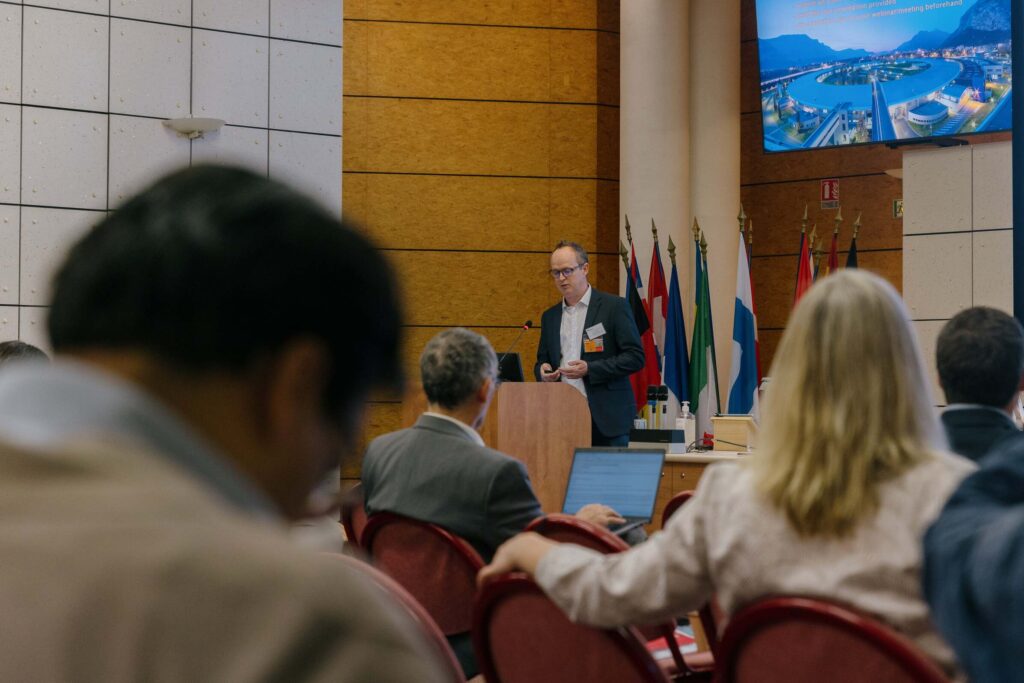
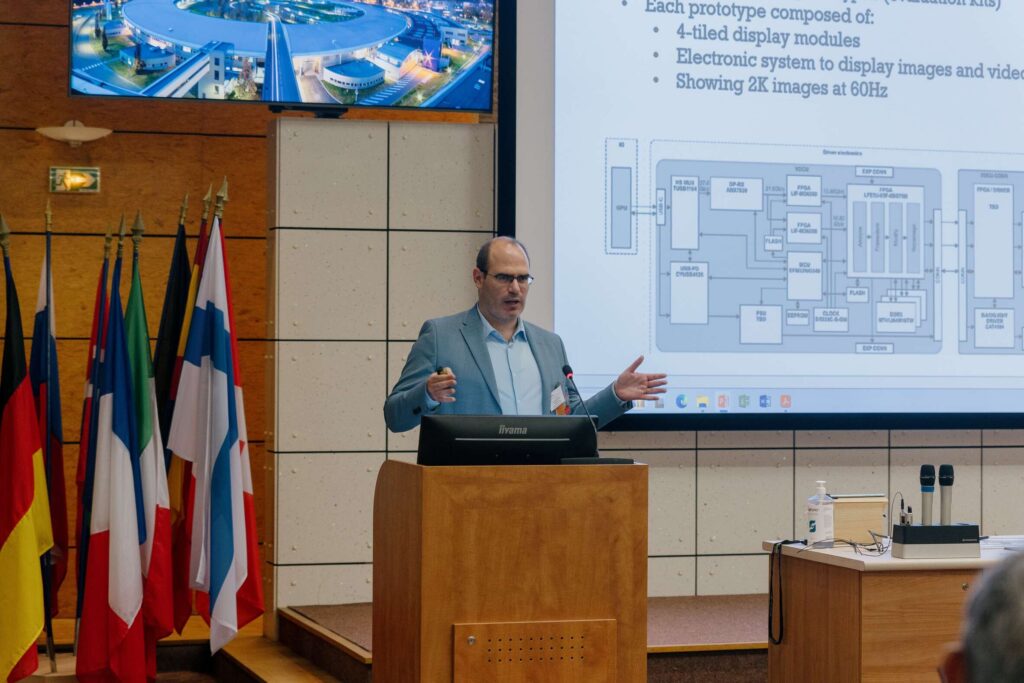

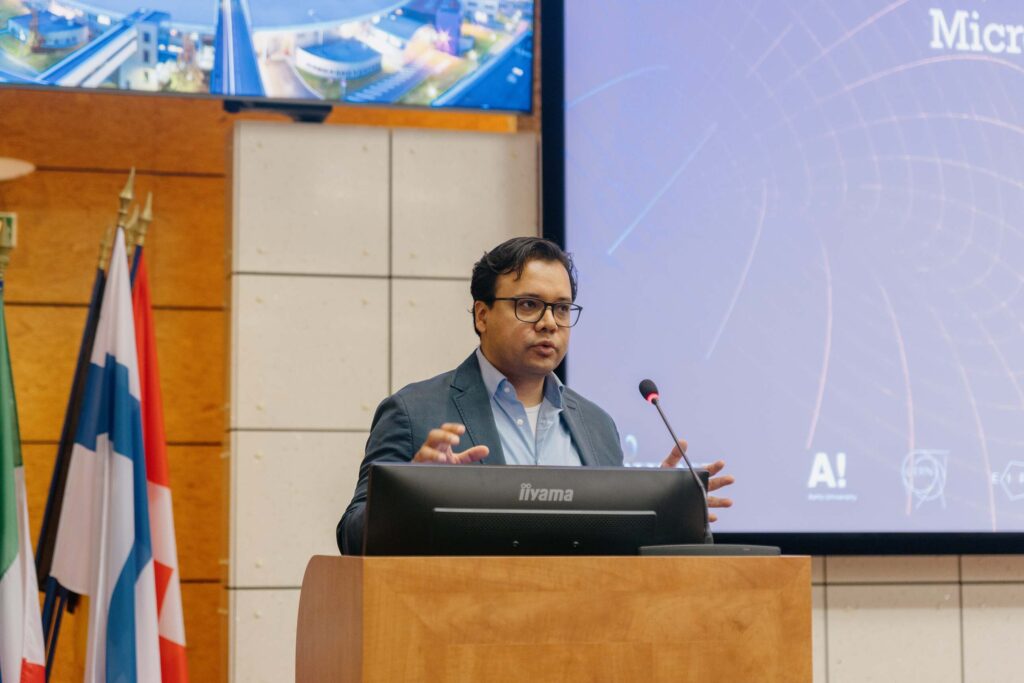
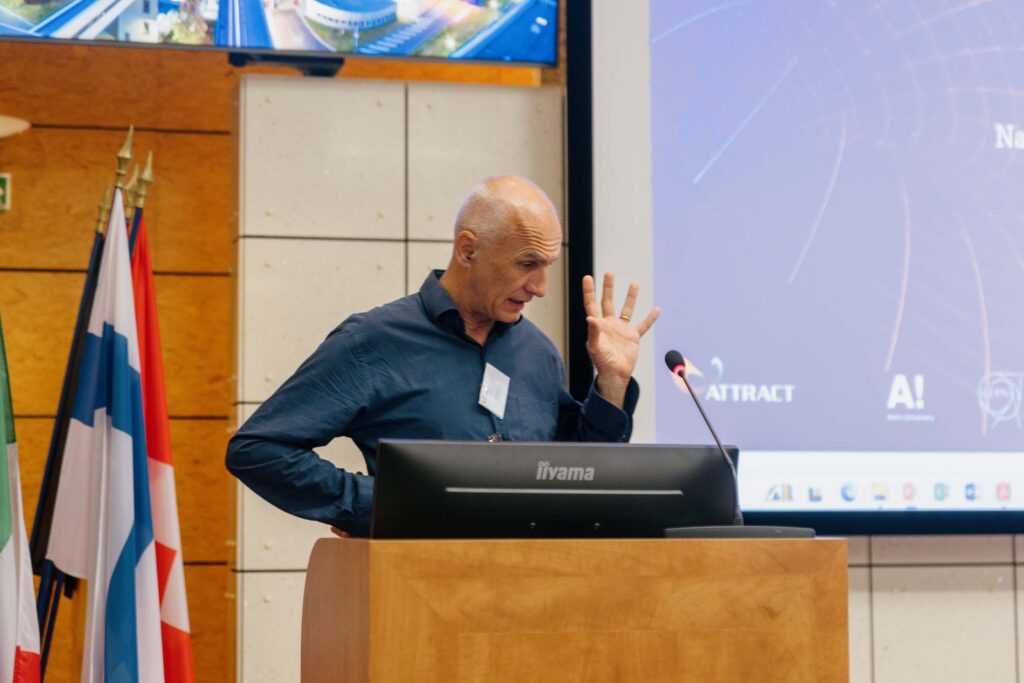
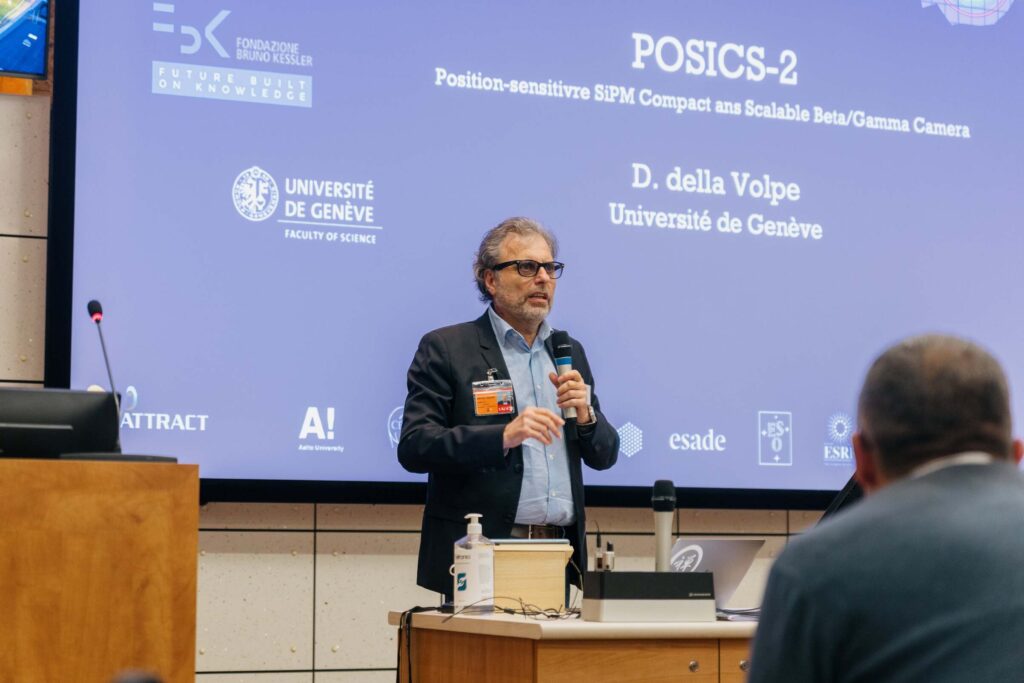
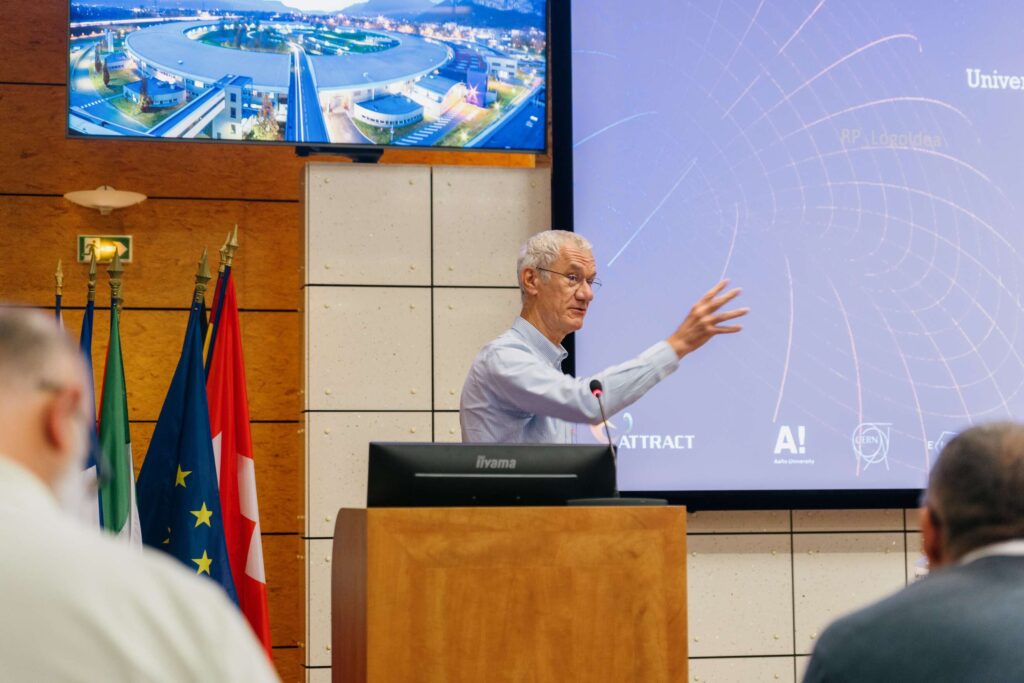
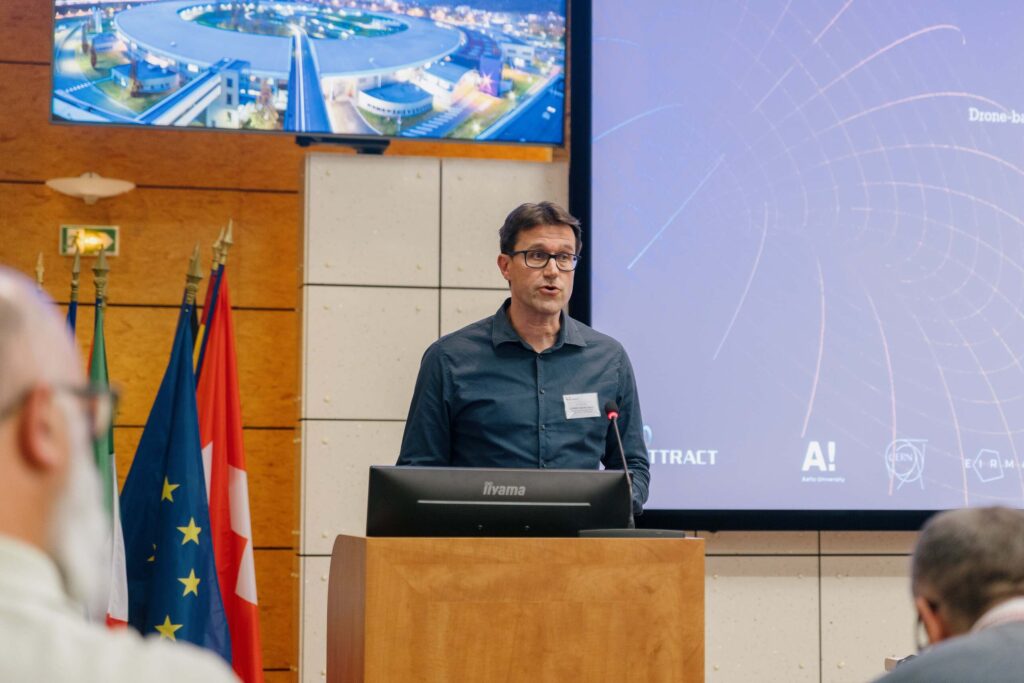

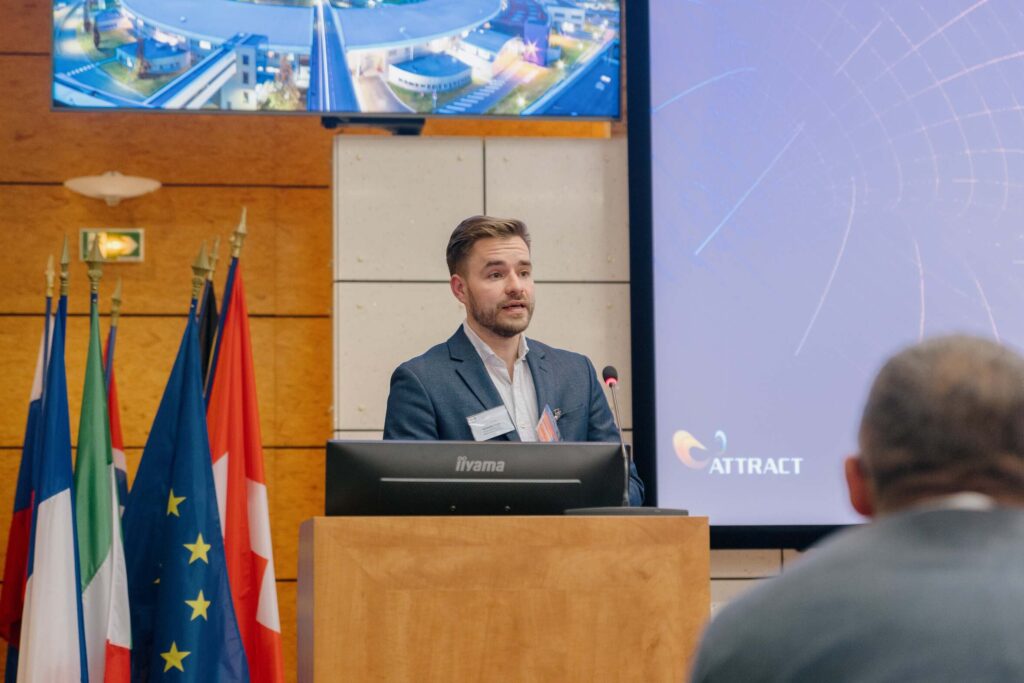
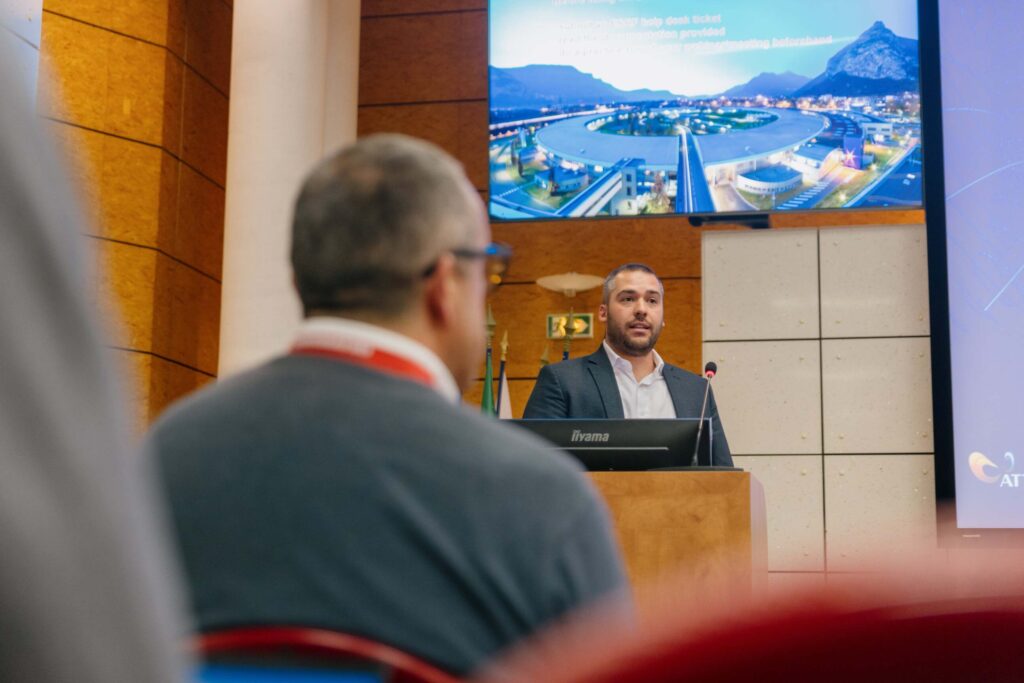

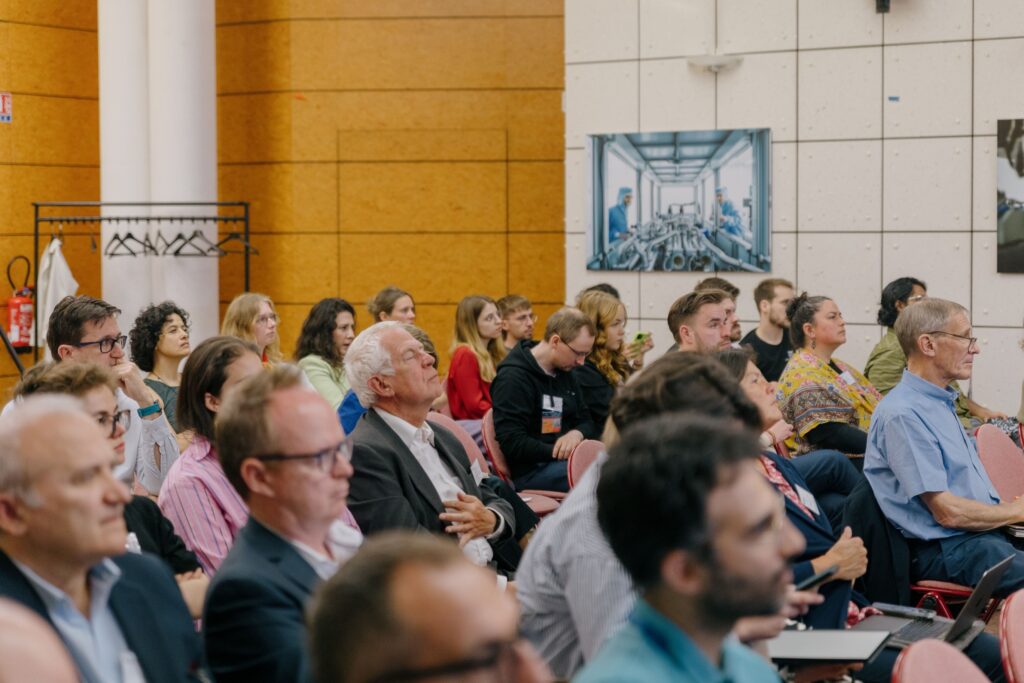

For more information
Visit the ATTRACT showroom to see all the R&D&I projects.
The ATTRACT Pre-Final Conference, held at the European Synchrotron Radiation Facility (ESRF) in Grenoble, France, was a crucial event for ATTRACT phase 2. It brought together a large community of researchers and innovators to explore technological advancements with the potential to address critical societal challenges and push the boundaries of scientific discovery. Specifically, it provided […]

